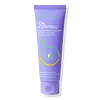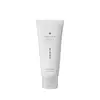What's inside
What's inside
 Key Ingredients
Key Ingredients

 Benefits
Benefits

 Concerns
Concerns

 Ingredients Side-by-side
Ingredients Side-by-side

Water
Skin ConditioningDisodium Cocoamphodiacetate
CleansingSodium C14-16 Olefin Sulfonate
CleansingNiacinamide
SmoothingSodium Chloride
MaskingPolyglyceryl-4 Caprate
EmulsifyingAcrylates Copolymer
Glycerin
HumectantPinus Densiflora Bark Extract
Skin ConditioningPinus Palustris Leaf Extract
TonicCamellia Sinensis Leaf Extract
AntimicrobialSea Water
HumectantZinc PCA
HumectantPueraria Lobata Root Extract
HumectantUlmus Davidiana Root Extract
Skin ConditioningAloe Barbadensis Leaf Extract
EmollientCeramide NP
Skin Conditioning1,2-Hexanediol
Skin ConditioningButylene Glycol
HumectantCitric Acid
BufferingOenothera Biennis Flower Extract
AstringentArginine
MaskingMelaleuca Alternifolia Leaf Extract
PerfumingCaprylyl Glycol
EmollientCaprylhydroxamic Acid
Eucalyptus Globulus Leaf Oil
PerfumingWater, Disodium Cocoamphodiacetate, Sodium C14-16 Olefin Sulfonate, Niacinamide, Sodium Chloride, Polyglyceryl-4 Caprate, Acrylates Copolymer, Glycerin, Pinus Densiflora Bark Extract, Pinus Palustris Leaf Extract, Camellia Sinensis Leaf Extract, Sea Water, Zinc PCA, Pueraria Lobata Root Extract, Ulmus Davidiana Root Extract, Aloe Barbadensis Leaf Extract, Ceramide NP, 1,2-Hexanediol, Butylene Glycol, Citric Acid, Oenothera Biennis Flower Extract, Arginine, Melaleuca Alternifolia Leaf Extract, Caprylyl Glycol, Caprylhydroxamic Acid, Eucalyptus Globulus Leaf Oil
Water
Skin ConditioningLauryl Hydroxysultaine
CleansingSodium Chloride
MaskingPotassium Cocoyl Glycinate
Potassium Cocoate
EmulsifyingAcrylates Copolymer
Glycerin
HumectantDisodium Cocoamphodiacetate
CleansingHexylene Glycol
EmulsifyingCoco-Glucoside
CleansingButylene Glycol
Humectant1,2-Hexanediol
Skin ConditioningSodium Hyaluronate
HumectantHydrolyzed Collagen
EmollientDipropylene Glycol
HumectantHydroxyacetophenone
AntioxidantCaprylyl Glycol
EmollientDipotassium Glycyrrhizate
HumectantSalvia Officinalis Oil
MaskingArtemisia Vulgaris Oil
PerfumingOcimum Basilicum Oil
MaskingEthylhexylglycerin
Skin ConditioningTocopherol
AntioxidantTromethamine
BufferingDisodium EDTA
Water, Lauryl Hydroxysultaine, Sodium Chloride, Potassium Cocoyl Glycinate, Potassium Cocoate, Acrylates Copolymer, Glycerin, Disodium Cocoamphodiacetate, Hexylene Glycol, Coco-Glucoside, Butylene Glycol, 1,2-Hexanediol, Sodium Hyaluronate, Hydrolyzed Collagen, Dipropylene Glycol, Hydroxyacetophenone, Caprylyl Glycol, Dipotassium Glycyrrhizate, Salvia Officinalis Oil, Artemisia Vulgaris Oil, Ocimum Basilicum Oil, Ethylhexylglycerin, Tocopherol, Tromethamine, Disodium EDTA
 Reviews
Reviews

Ingredients Explained
These ingredients are found in both products.
Ingredients higher up in an ingredient list are typically present in a larger amount.
1,2-Hexanediol is a synthetic liquid and another multi-functional powerhouse.
It is a:
- Humectant, drawing moisture into the skin
- Emollient, helping to soften skin
- Solvent, dispersing and stabilizing formulas
- Preservative booster, enhancing the antimicrobial activity of other preservatives
Acrylates Copolymer is used as a film-forming agent and texture enhancer.
After applied, Acrylates Copolymer forms a thin film cover that helps skin feel more soft. It can help sunscreens become more water-resistant.
It is also used to make a product more thick.
Learn more about Acrylates CopolymerButylene Glycol (or BG) is used within cosmetic products for a few different reasons:
Overall, Butylene Glycol is a safe and well-rounded ingredient that works well with other ingredients.
Though this ingredient works well with most skin types, some people with sensitive skin may experience a reaction such as allergic rashes, closed comedones, or itchiness.
Learn more about Butylene GlycolCaprylyl Glycol is a humectant and emollient, meaning it attracts and preserves moisture.
It is a common ingredient in many products, especially those designed to hydrate skin. The primary benefits are retaining moisture, skin softening, and promoting a healthy skin barrier.
Though Caprylyl Glycol is an alcohol derived from fatty acids, it is not the kind that can dry out skin.
This ingredient is also used as a preservative to extend the life of products. It has slight antimicrobial properties.
Learn more about Caprylyl GlycolDisodium Cocoamphodiacetate is a surfactant and helps cleanse skin. It is created from the fatty acids of coconut oil.
Surfactants help rinse oil, dirt, and other pollutants easily from skin. It has a faint fruit-like scent.
Glycerin is already naturally found in your skin. It helps moisturize and protect your skin.
A study from 2016 found glycerin to be more effective as a humectant than AHAs and hyaluronic acid.
As a humectant, it helps the skin stay hydrated by pulling moisture to your skin. The low molecular weight of glycerin allows it to pull moisture into the deeper layers of your skin.
Hydrated skin improves your skin barrier; Your skin barrier helps protect against irritants and bacteria.
Glycerin has also been found to have antimicrobial and antiviral properties. Due to these properties, glycerin is often used in wound and burn treatments.
In cosmetics, glycerin is usually derived from plants such as soybean or palm. However, it can also be sourced from animals, such as tallow or animal fat.
This ingredient is organic, colorless, odorless, and non-toxic.
Glycerin is the name for this ingredient in American English. British English uses Glycerol/Glycerine.
Learn more about GlycerinChances are, you eat sodium chloride every day. Sodium Chloride is also known as table salt.
This ingredient has many purposes in skincare: thickener, emulsifier, and exfoliator.
You'll most likely find this ingredient in cleansers where it is used to create a gel-like texture. As an emulsifier, it also prevents ingredients from separating.
There is much debate on whether this ingredient is comedogenic. The short answer - comedogenic ratings don't tell the whole story. Learn more about comegodenic ratings here.
The concensus about this ingredient causing acne seems to be divided. Research is needed to understand if this ingredient does cause acne.
Scrubs may use salt as the primary exfoliating ingredient.
Learn more about Sodium ChlorideWater. It's the most common cosmetic ingredient of all. You'll usually see it at the top of ingredient lists, meaning that it makes up the largest part of the product.
So why is it so popular? Water most often acts as a solvent - this means that it helps dissolve other ingredients into the formulation.
You'll also recognize water as that liquid we all need to stay alive. If you see this, drink a glass of water. Stay hydrated!
Learn more about Water